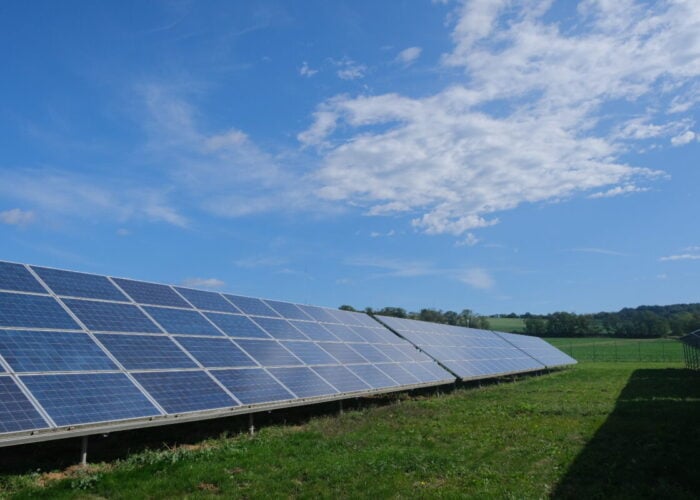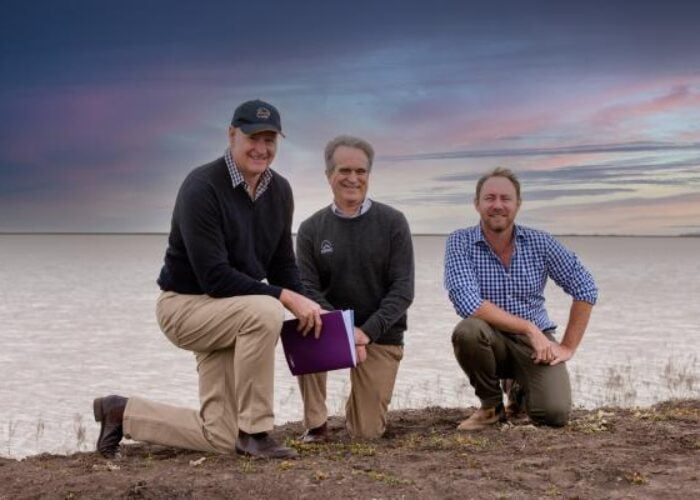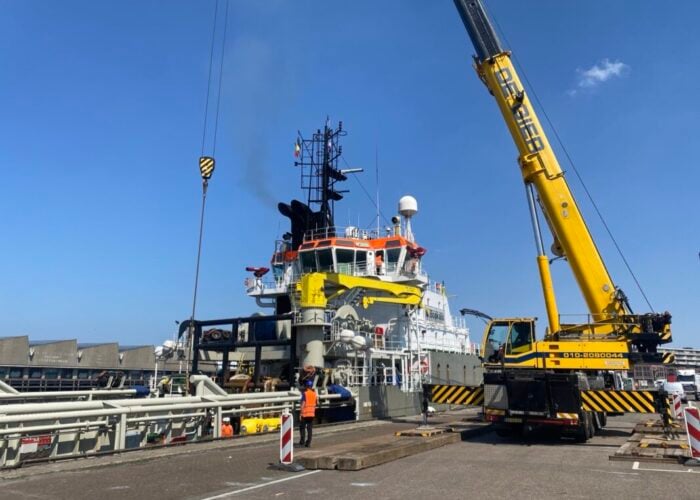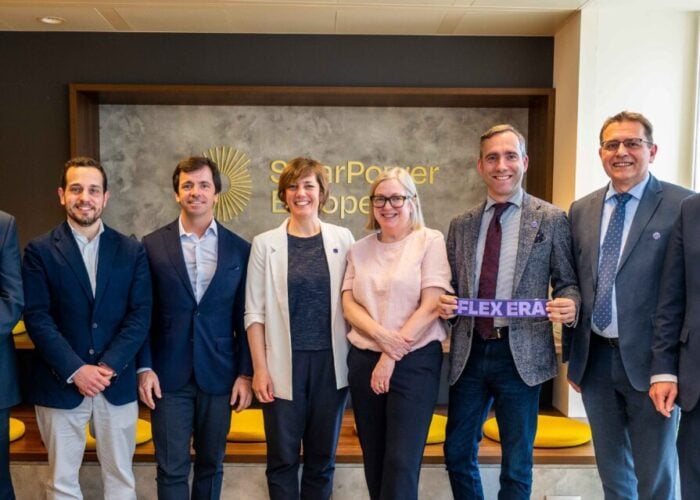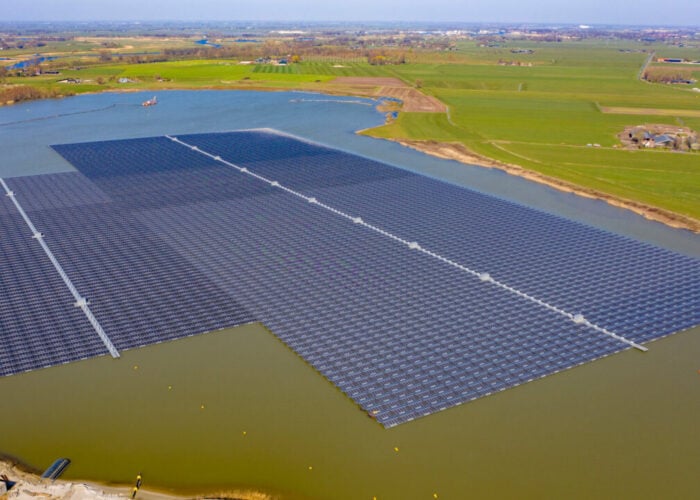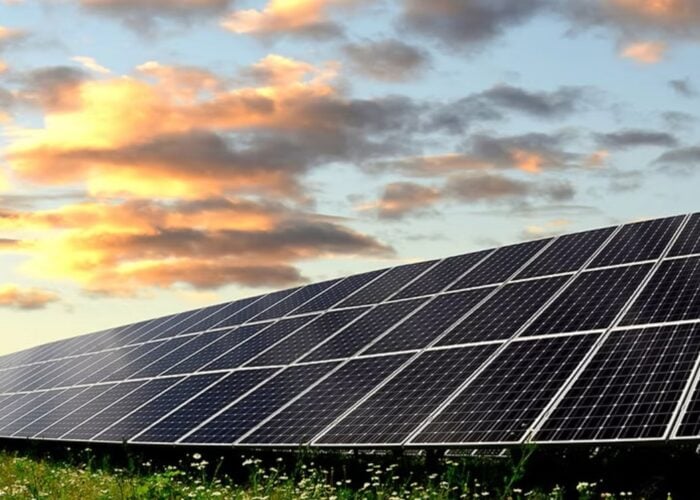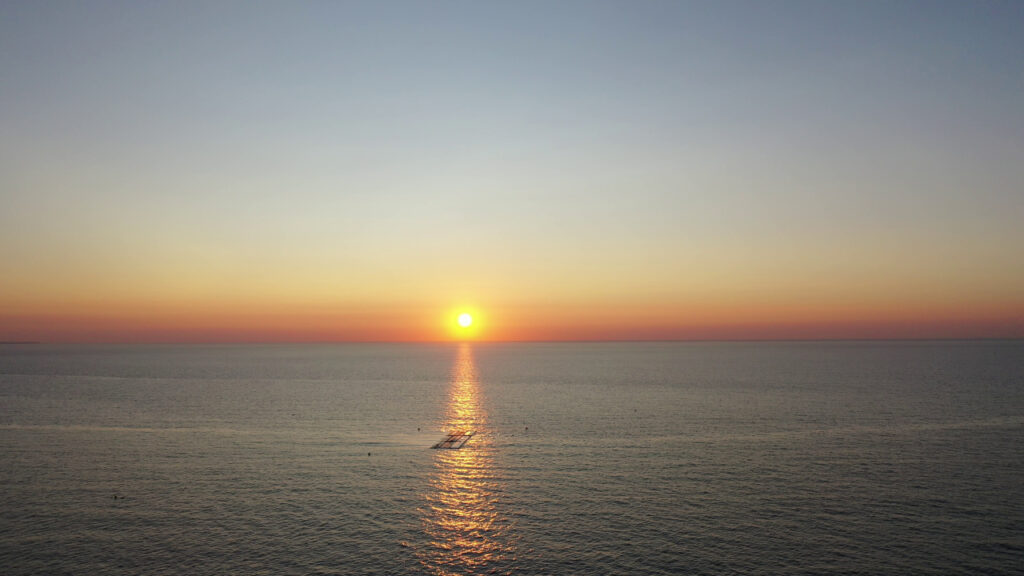
The idea of stationing PV systems at sea is rapidly gaining traction as an exciting new opportunity for the industry. Jasper Lemmens and Magnus B. Johannesen of DNV assess the many engineering challenges of offshore solar and its prospects for commercialisation.
Renewable energy is, by its very nature, abundant – therein lies one of its fundamental and most obvious benefits. But in transitioning to a world that runs on renewable power, governments, businesses and society will have to come to terms with the issues that scarcity presents. The time we have to decarbonise is running out, the raw materials needed to create a green energy infrastructure backbone (everything from wind turbines to electric vehicle batteries) are finite and in many parts of the world, land suitable for project development (that which is relatively flat) will be at a premium. Over 70% of the earth’s surface is covered by water – of that about 96.5% is saltwater – and this is where an ever-increasing proportion of the world’s energy infrastructure will need to be located.
Unlock unlimited access for 12 whole months of distinctive global analysis
Photovoltaics International is now included.
- Regular insight and analysis of the industry’s biggest developments
- In-depth interviews with the industry’s leading figures
- Unlimited digital access to the PV Tech Power journal catalogue
- Unlimited digital access to the Photovoltaics International journal catalogue
- Access to more than 1,000 technical papers
- Discounts on Solar Media’s portfolio of events, in-person and virtual
It goes without saying that offshore areas provide vast expanses of space, a major consideration when it comes to the development of large-scale renewables. Onshore, these projects would be competing for land use with other activities, such as agriculture or urban development. Out at sea though, they are largely out of sight and out of mind.
Solar developers are increasingly coming around to the exciting potential of stationing hundreds of photovoltaic systems offshore. Solar irradiance levels are broadly higher at sea than they are onshore, meaning floating photovoltaics (FPV) have access to abundant renewable resources, leading to higher energy production potential and more consistent generation throughout the year.
Floating solar farms can also be located closer to densely populated coastal areas, reducing the need for long-distance transmission cables, thereby minimising energy losses. Moreover, by putting assets nearshore, they are less exposed to extreme weather events, such as hurricanes or flooding, bolstering resilience in the face of climate change.
Taking stock on progress to date
But for all the potential, the world is still some way off from having a commercially viable offshore FPV project. That is not to say there aren’t numerous FPV systems in operation, but most of those that are currently harvesting the sun’s power are inland, located on lakes or reservoirs. As such they typically don’t have to overcome the challenges posed by saltwater and wave motion. That being said, just recently, one of the world’s largest floating solar plants, at a dam in India, suffered severe damage during a storm. But generally speaking, this branch of floating solar has proved to be an easier nut to crack.
Several dozen pilot, demonstration and innovation projects, designed to prove the viability of offshore FPV, have already been successfully deployed or are in development. But there is a large and definite disparity in the technology-readiness level of these initiatives when compared to inland schemes. Efforts are ongoing to close this gap, but progress has been relatively, and understandably, slow to date. Encouragingly, the pace is quickening, and companies are willing to elevate their projects to a commercial level.
Reliable analysis and established prototype installations are still needed to increase our understanding of how floating solar performs in exposed locations. For the most part, the projects that have been installed have been on a research and development basis by manufacturers. As a rule of thumb, these first-mover projects have an installed capacity of up to a megawatt, though that is higher for nearshore, with 181MW and 250MW systems stationed just off Taiwan.
Interest in offshore FPV is growing steadily, particularly from Big Oil and renewables players who are exploring combining the technology with offshore wind, Power-to-X developments and fish farms. Moreover, the Netherlands has included criteria for up to 50MW of floating solar in its latest seabed leasing round in a bid to accelerate the coexistence of technologies.
Battling the elements
Projects like these are also testament to the sector’s ability to conquer the key design challenges and risks associated with offshore solar. Rougher waters, stronger winds and saltwater corrosion all take their toll on projects. It takes a great deal of engineering to create a system that can stand up to the rigours of the sea; making that system cost-effective is another thing entirely.
A leading energy company recently declined a move into offshore solar because of the saltwater consideration, which massively affects the durability of the system. PV modules, the key component in solar systems, are not designed for salty environments. Even when PV modules are located onshore but near to the sea, corrosiveness can be a problem. Similarly, electrical systems, such as inverters, will be in constant motion, something they are not designed for – this needs to be taken into account during design.
Should the scale of offshore and nearshore FPV increase dramatically, into the gigawatt scale, this would require many square kilometers of PV modules, covering vast swathes of the ocean surface. It is currently exceedingly difficult to know how this will affect sea life. Algae – the start of the marine food chain and source of all life in the ocean – needs sunlight to live and grow and the impacts of blocking this out is something developers need to be cognisant of. There is also a chance to cultivate sea life, and there have been mentions of an increase in fish life around installations, which provide a safe haven from birds and the growth of mussels.
The small pilot systems that are currently being advanced can be installed with little or no impact on the surrounding environment, and this will remain the case for 1MW, 5MW and 10MW systems. But this will change once the technology becomes commercial and the demand for large-scale projects increases. The floating solar sector, in partnership with other stakeholders like government, must monitor the effects during upscaling to reduce the risk of large-scale projects in development being cancelled.
The three offshore floating solutions vying for position
Three main technological solutions that could hold the key to overcoming the sector’s engineering challenges are emerging. Two fall under the umbrella of ‘rafted exposed’ technology (elevated and low profile), while the other is based on a ‘membrane’ design.
As the name suggests, ‘elevated’ rafted technology consists of a reinforced framework, which supports PV modules that are raised to generate a sufficient freeboard to minimize the impact from waves on the elevated platform. As such it can avoid higher swells and is able to offer better protection to panels and the topside equipment.
Conversely, the ‘low-profile’ solution is sat on the water’s surface and designed so that the system is riding on top of the waves, allowing them to flow through the system. While this can lead to panels at the edges of the platform being submerged, it curbs the impact and force of the waves on the wider floating structure.
While the ‘rafted exposed’ solutions tend to have a generally higher capex and heavier modules, they are easily adjustable, have stable walkways for maintenance, are robust and allow for air circulation to keep the system cool, thereby enhancing the efficiency of the panels.
Like ‘low-profile’, ‘membrane’ technology also sits on the water’s surface, but rather than being a free flowing carpet of solar modules that aren’t rigidly connected, panels are fitted to a large, mattress-like floater. The first versions of this solution, those developed by Ocean Sun and Inseanergy, were based on designs from fish farming and intended for use in climate conditions near to the equator. The membrane is pliable and follows the shape of the waves, providing strong resistance against the impacts of wind, currents, and swells, with research suggesting it is able to stand up to a category four typhoon.
‘Membrane’ systems are also actively cooled from water contact, which again leads to higher energy yield, though the technology is not without its drawbacks. As panels are placed on a singular, closed bed, there is a risk of water accumulation. They can also be complex to install, with separate platforms needed for transformers, and in the event of the membrane failing, then the entire system can be put in jeopardy.
Finding the right floating fit for differing needs
But in what is still a fledgling sector, it is far too early to rule out any of these technologies based on their current shortcomings. Certain geographies will require certain solutions, and companies from various different countries are advancing their own versions of the three primary floating solutions.
Ocean Sun (Norway) and Bluewater Energy Services (the Netherlands) are pioneering the development of membrane-based floating solar, while the likes of Oceans of Energy (the Netherlands), Fred. Olsen 1848 (Norway) and Offsolar (France) are focusing on the development of rafted-low profile. Rafted elevated solar is primarily being advanced by Solarduck (the Netherlands), SeaVolt (Belgium), and Moss Maritime (Norway), and at DNV we have been combining our knowledge of the solar energy and maritime industries to give floating solar developers the certainty and confidence needed to accelerate the deployment of this emerging sector.
Confidence is key
Validation of techniques and designs is a vital step in building sector confidence. The process of verification, or similar third-party assessments of developing concepts, is crucial to derisk the development process and ensure that the potential for issues, failures and shortcomings is reduced as much as possible before commissioning novel concepts. Cases like these will hopefully act as a springboard for similar developments, accelerating the pace of floating solar deployment in exposed waters.
There are three separate approaches that DNV takes when assessing new concepts:
- Technology qualification: Advisory service guiding the concept owner by developing frameworks for qualification.
- Third-party verification: Reviewing and independent analysis of the system to ensure that the methods and results comply with the selected approval framework.
- Certification: Review and independent analysis according to DNV service specification to comply with accredited certification scheme as the approval framework.
Up to now the work that DNV has done has been verification of design methodologies (Ocean Sun, Sunlit Sea, Oceans of Energy, Moss Maritime, Sungrow). Going beyond this point does not mean it is necessary to conduct certification, but the level of involvement would need to be increased.
We are in the process of working with technology providers to establish when those FPV schemes that have received verification on a design basis level will be in a position to move onto evaluation of prototype or detailed engineering. Once achieved, this will be yet another step in giving project stakeholders – utilities, project developers, investors, lenders, insurance companies – the assurance and trust needed to spur on a wider rollout of floating solar technology in harsh environments.
Beyond certification, which can often take years, DNV can advise technology developers as the project progresses. By regularly giving third-party oversight to concepts, our experts can ensure they adhere to best practices and the latest industry standards.
Such ongoing input can be invaluable when it eventually comes to certifying a project, increasing the likelihood that assets will behave as expected in different conditions. Provided they operate within the specified frame, solutions can then be copied and pasted for use around the world.
External verification is also key to integrating FPV solar with other offshore renewables sources, such as offshore wind. Inevitably as the number of stakeholders increases, there is a greater requirement for detailed analysis and checks to keep multiple parties’ content.
An increasingly global sector
Advances in floating solar are not simply confined to Europe, though, and other regions are making good progress, feeding into a global marketplace that is becoming ever healthier and more intriguing. In Asia, the Philippines, Singapore, Malaysia, Japan, Indonesia and, of course, China are all extremely interested in the potential for floating solar. SolarDuck is advancing plans alongside Tokyo’s local government to set up an FPV test bed. Meanwhile, the 440MWp Changhua floating solar park near Taiwan became operational last year.
These projects and the real-world examples they provide will help create a blueprint for countries wanting to foster their own floating solar industry. Crucial to driving this growth will be the offshore skills that have been honed and sharpened in the oil and gas industry over many decades. Such knowledge of floating structures should give real cause for optimism that floating solar technology can work at scale. Inevitably, many of the people currently driving the FPV sector forwards started out in the maritime or
offshore energy industries.
Setting the foundations for a floating future
Getting across this first hurdle – proving the technology and building certainty – is going to be so much harder than reaching the next hurdle – can you generate energy cost-effectively enough to make it viable? That is not to underplay the importance of design and technical engineering costs, but investment will be easier to come by once companies have proven that offshore and nearshore FPV is viable at scale.
DNV is in the process of writing two new standards for floating solar to help give the assurance needed for the sector mature. Two joint industry projects to develop dedicated FPV specifications, rather than the sector having to make use of standards designed for other systems, kicked off in 2022. Once these directions are in place, they will provide a solid foundation for the floating solar sector to build upon.
All of the above is to say that, as far as overcoming the engineering, logistical and other barriers of offshore floating solar is concerned, there is a ‘way’. What we really need now is a strong will from the offshore energy sector, government and investors. Very soon it will be crunch time for floating offshore solar – the challenges of realising the potential benefits of this sector are immense.
We mustn’t allow pessimism to creep in, though; if we don’t try to overcome the challenges that lie before us then there is a guaranteed, 100% chance that we never solve them and the progress that has been made so far will invariably be lost. Those companies that are serious about delivering floating offshore solar need to apply some serious engineering and prove the detractors wrong.
Floating offshore solar has already come a long way in recent years and there is a chance to replicate and better this progress in the years ahead. Countries such as the Netherlands are setting the space in this regard, putting the required time, effort, and money into developing the solutions that can move this sector from concept to commerciality.
Jasper Lemmens is a senior consultant and DNV’s global practice lead floating PV. He has master’s degrees in applied physics and business administration. In 2017 Jasper started working with floating PV when the floating PV market was about to emerge and initiated the development of services and standardisation which lead to DNV’s Recommended Practice on floating solar in 2021.
Magnus B. Johannesen is a senior engineer in the section for environmental loading and response. He holds a master’s degree in mechanical engineering with a focus on computational fluid dynamics. For floating solar he has been involved in many projects and focuses on the mooring, floater motions and structural integrity of the systems.

